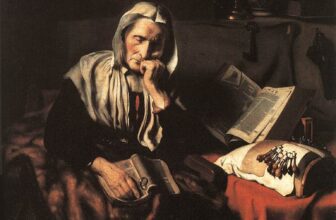
OMA Galeria
Forgery Unveiled: Tarsila do Amaral Painting at São Paulo’s SP Arte Revealed as Fake
The esteemed São Paulo art fair, SP Arte, witnessed a shocking revelation last week as an untitled painting attributed to the renowned Brazilian artist Tarsila do Amaral was deemed a forgery. This revelation, disclosed by Jones Bergamin, President, and Director of Bolsa de Arte, one of Brazil’s premier auction houses and secondary-market galleries, has sent ripples through the art world, sparking discussions about authenticity, provenance, and the challenges of detecting art fraud. This article delves into the unfolding controversy surrounding the forged painting, its implications for the art market, and the broader discourse on safeguarding artistic integrity.
The Alleged Forgery
The untitled painting, purportedly by Tarsila do Amaral, was prominently featured at São Paulo’s SP Arte, a prestigious annual event showcasing contemporary art from around the world. Its inclusion in the fair generated significant buzz and anticipation among collectors and enthusiasts, drawn by the allure of acquiring a work attributed to one of Brazil’s most iconic artists. However, Jones Bergamin’s revelation cast doubt on the painting’s authenticity, challenging its attribution to Tarsila do Amaral and prompting a reevaluation of its provenance.
Jones Bergamin’s Statement
Jones Bergamin, a respected figure in Brazil’s art world, made the startling announcement during SP Arte, declaring that the painting in question was a forgery. As the President and Director of Bolsa de Arte, Bergamin’s assertion carries considerable weight, signaling a significant setback for those involved in the sale and acquisition of the purported Tarsila do Amaral artwork. His disclosure underscores the importance of due diligence and expertise in verifying the authenticity of artworks, particularly those attributed to renowned artists with a storied legacy like Tarsila do Amaral.
Repercussions in the Art Market
The revelation of a forged Tarsila do Amaral painting has reverberated throughout the art market, raising concerns about the prevalence of art fraud and the challenges of detecting counterfeit works. As collectors and investors grapple with the implications of the forgery, questions arise about the reliability of provenance, authentication processes, and the safeguards in place to protect against fraud. The incident serves as a stark reminder of the risks inherent in the buying and selling of art and underscores the need for increased vigilance and transparency within the industry.
Protecting Artistic Integrity
The case of the forged Tarsila do Amaral painting underscores the importance of safeguarding artistic integrity and ensuring the authenticity of artworks attributed to renowned artists. In an increasingly complex and globalized art market, where demand for rare and valuable works continues to rise, the risk of encountering forgeries and counterfeit pieces remains ever-present. As such, collectors, dealers, and institutions must prioritize rigorous authentication processes, thorough provenance research, and collaboration with experts to mitigate the risks of fraud and protect the integrity of artistic legacies.
Moving Forward
As the investigation into the forged Tarsila do Amaral painting unfolds, stakeholders in the art world must confront the broader issues raised by this incident. Efforts to enhance transparency, accountability, and regulation within the art market are essential to safeguarding against future instances of fraud and maintaining public trust in the authenticity of artworks. By learning from this experience and implementing measures to strengthen authentication practices and oversight, the art community can uphold the integrity of artistic expression and ensure that works of cultural significance are preserved and celebrated for generations to come.




